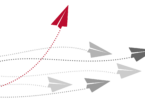ATHENS, Ga. – Georgia’s wildlife just had its “picture” taken, and it’s tremendous. Using aerial and satellite images as reference points, the most comprehensive maps and data collection ever made of the state’s common plant and animal life are now available to anyone with an interest in the development or preservation of natural areas of the state. The images and database, which take four compact discs to hold, go far beyond any previously available information on Georgia’s vegetation and animal species.
“They include more than forty classes of plant communities, from live oak forests and open fields to shrub wetlands,” said Matt Elliott, project coordinator for the NAtural Resources Spatial Analysis Laboratory, (NARSAL) at the University of Georgia, which conducted the work. In addition, the maps and accompanying data show the distribution of more than 400 common vertebrate animals, including 167 bird species, as well as roads, streams and other natural features.
Such a broad scope of geographic and biological detail combined in one package will be invaluable to land-use planners, said Liz Kramer, NARSAL’s director. The scale of 1:100,000 gives users practical close-ups of every part of Georgia. Kramer’s unit, part of the College of Environment and Design, spent five years gathering and organizing species inventories and other data about the state from a wide variety of sources in order to prepare the maps and an explanatory report.
“By consulting this, developers can minimize the time they spend preparing environmental assessments for government agencies,” she noted. Policy makers can also use the information to look ahead, and communities wishing to establish public greenspaces will find this “snapshot” of the state useful for adding biodiversity to their plans.
“This can indicate the possibility of an endangered species – tell if the habitat is right for that species,” Kevin Samples, a research technician with the project, explains. “It can be used by anyone who wants to get an idea about the value of an area for natural resource protection.”
The complete four-CD set of maps, database and report, called “The GA-GAP Final Report,” can be ordered for the cost of shipping and handling ($15.00) from NARSAL’s Web site (http://narsal.ecology.uga.edu).







